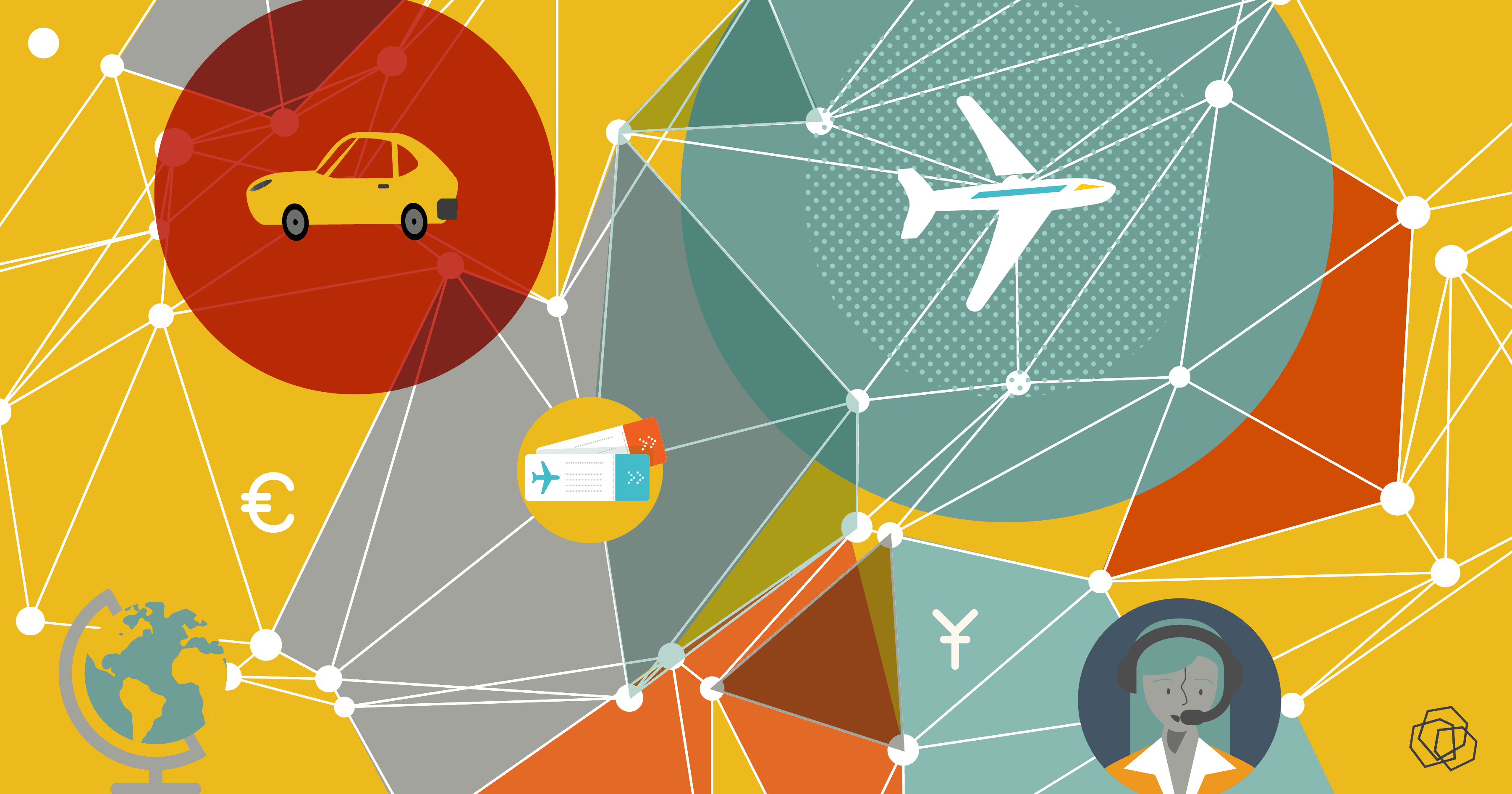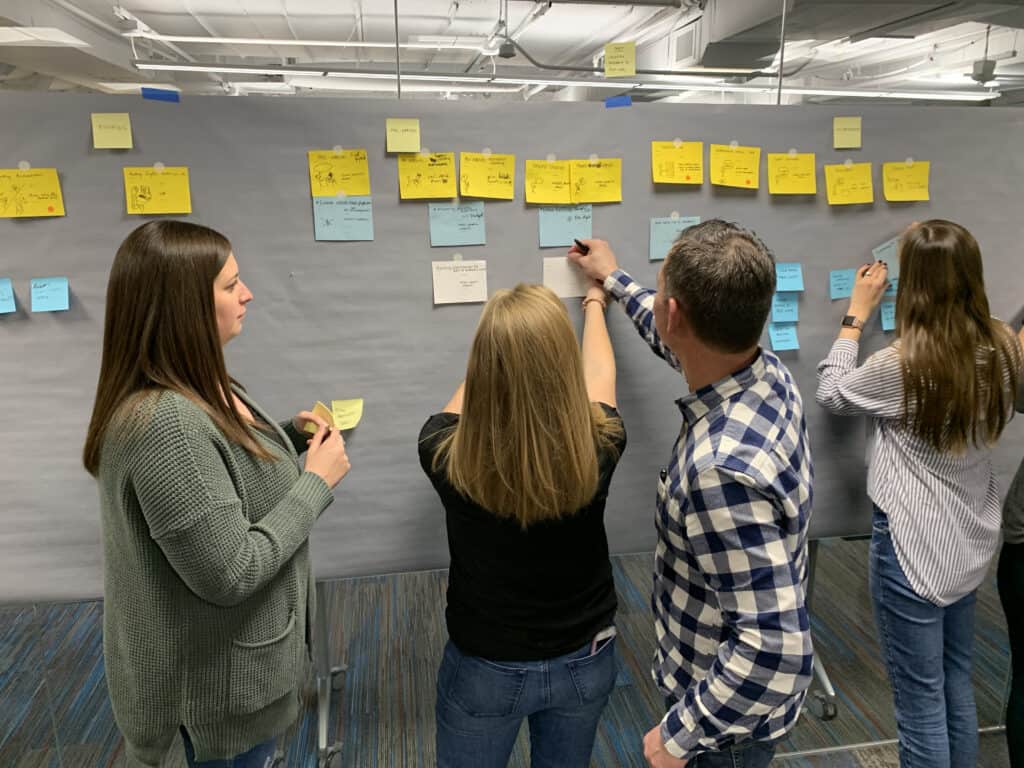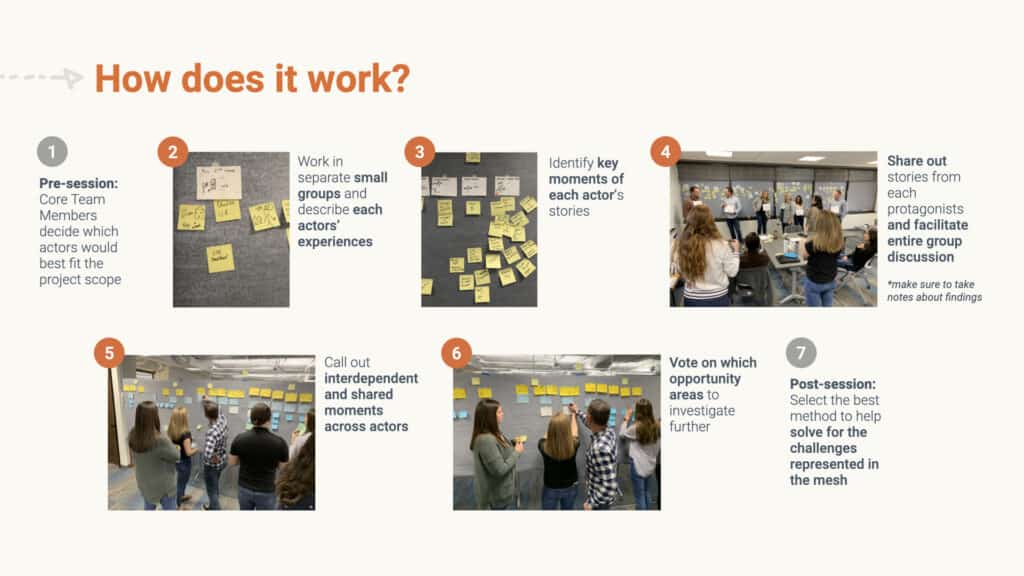
Picture this, you have thoroughly planned the vacation of your dreams and a pandemic hit that required you to cancel your plans. From a customer perspective, is an awful and emotional roller coaster experience, for service providers is also an awful and emotional experience.
Complex situations like this require us to think beyond the customer and look at the impact on a large ecosystem. It is easy to say but not easy to do, that is why at Harmonic Design we are always looking for ways to increasingly design systems of moments that orchestrate value exchanges among multiple actors in shifting contexts. As we have further formalized our principles and methods for these challenges, we’ve noticed that there is a gap in current service design tools. When we use customer-centric tools (such as journey maps, service blueprints, empathy maps), we end up designing experiences in favor of one main actor, the customer, and there is no visual room to add employees or service provider’s stories in the experience. We asked ourselves: how might we go beyond a single customer experience to account for the needs of all people participating in the same service/journey? One technique we created from our exploration is Experience Mesh.
Experience Mesh is a simple sense-making technique driven by a storytelling activity that combines multiple actors’ stories in one single view of a service experience. It is called “mesh” because it provides a visual way to identify interdependent sequences of actions across different actors that are part of the same service experience.

Once you mesh different actors and their stories into this holistic view, you can:
This method relies on bringing together the right subject matter experts (SMEs) in a (virtual) room to share stories from the perspective of each actor that is part of a chosen experience. By sharing stories from multiple perspectives, we can visualize and assess how inside-out and outside-in perspectives influence that service experience as a whole. For the time being, this tool has been used mostly during the discovery phase as a way to get alignment in organizations on what to prioritize, identify experience gaps, high impact areas and look for possible unknown areas to conduct research.

We used the mesh to identify interdependent moments that were compromising three different actors in the same onboarding experience. At the end of the exercise, we gained alignment on where in the experience we should conduct an in-depth investigation on a small scale and produce a high level of impact across the three different actors.
We have also used this technique to rethink how an in-person handoff interaction could be delivered digitally. Stakeholders were able to visualize what part of the experience they needed to focus on first to optimize the digital experience without compromising customer and employee’s relationships.
In a pick-up delivery service, the mesh helped us identify the sequencing and the timing of this service across four different actors. In the end, we uncovered actions that were repetitive and inefficient.



(note: this is an ongoing list)
We have practiced the exercise mentioned above with two-four actors in small groups of four people up to larger groups of 30 people in business-to-business (B2B), business-to-business-to-consumer (B2B2C), and-business-to-consumer (B2C) markets. We’ve looked at various scenarios including onboarding experiences, pick-up delivery services, and reimagined digital experiences.
Most recently, during the Virtual Service Design Global Conference 2020, we put together a hands-on workshop to teach others how to conduct a mesh exercise in their own organization. The workshop participants were invited to play multiple roles during the workshop activity to master what is required to facilitate the Experience Mesh exercise. Participants were impressed with the potential of this tool and how it can be used as a starting point for including multi-actors in the same journey. They also mentioned that they were able to see how it can connect to other service design methods such as service blueprints and design research.
As we have pressure tested this technique across different organizational settings, we’ve noticed a few things:
At Harmonic Design, we believe that each actor plays an important role in the overall ecosystem and for that reason, Experience Mesh is one of many methods that can help create narratives to construct an overall Experience Tapestry, which is an approach that looks to compose many individual actor stories into a larger story of the service.
As we explore and expand how we mesh stories and align organizations, here are a few thought-starters on what we want to experiment with next:
Stay tuned for the next iteration of the Experience Mesh.
Co-creator for Experience Mesh: Stephen Taylor.
Collaborators: Matias Rey, Jeff Harris, and Patrick Quattlebaum